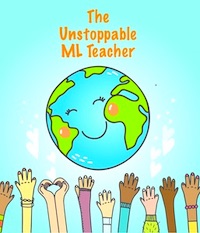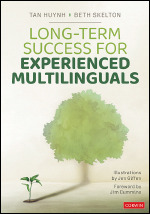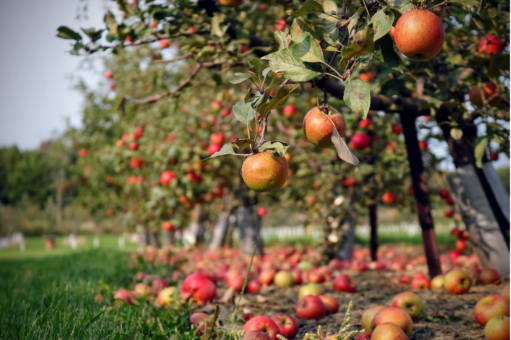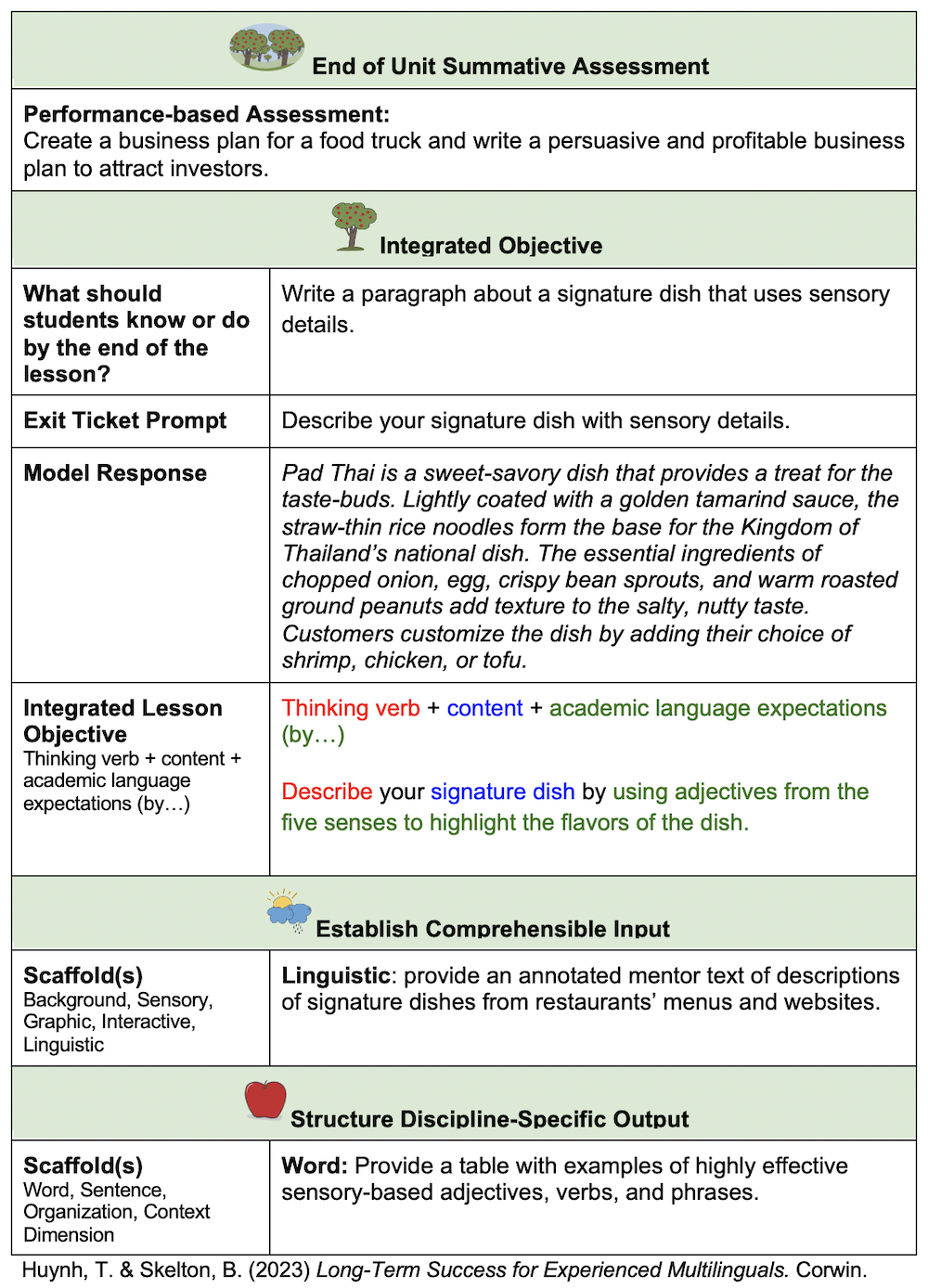A Lesson Template That Works for All Students
A MiddleWeb Blog

I remember seeing many planning templates from my pre-service training days and others prescribed by organizations. These templates were often designed for teachers who specialize in English language acquisition. But rarely were they accessible to homeroom or content teachers.
As Beth Skelton and I collaborated with Corwin to write Long-Term Success for Experienced Multilinguals, we created a lesson template that any general or specialist teacher can use without modification. Additionally, this lesson planning template follows the key principles needed to teach multilinguals content-specific language.
Step 1: End of unit summative
It may seem odd to start a lesson planning session by thinking about the summative assessment, but really, it is odd not to! If lessons are not directly tied to the summative, they become more like activities than intentional learning experiences. By starting with the summative, teachers can anchor an individual lesson to the aggregated product students will create.
Think of the lesson planning template as an orchard (I’ve previously used the term “forest”). In the summative, teachers can step back from the detailed work of pruning and collecting the produce of their unit to consider the concepts and skills required to craft a fruitful harvest.
These concepts and skills – like learning the correct way to thin branches or space your rows before planting – become the individual lessons that lead to the integrated (and often impressive!) summative: a well-tended grove lush with fresh, juicy apples.
For example, in a Grade 10 Business class, students have to design a full business plan for a food truck. The business plan is the summative, and all the individual parts of the business plan are taught as specific lessons over the unit.
The individual lessons include both important skills needed to write the plan and, when combined, a composite product that exhibits them as something greater than they were on their own. Educators can both teach the skills needed to grow an orchard and prudently select what type of orchard their students can successfully harvest.
Step 2: Integrated objective
Once we have defined what we want our orchard to produce, we focus on the individual trees, which are the specific lessons. This part of the lesson planning template requires teachers to follow a specific process that includes:
- identifying what students have to know or do by the end of the lesson
- writing the exit ticket prompt
- crafting the model response
- writing the integrated objective
Teachers can start by identifying the concepts and skills they want students to learn by the end of the lesson. For instance, the business teacher identified that the product of this specific lesson would be a highly descriptive text for the food truck’s signature dish. Therefore, the exit ticket for the lesson had students produce a signature dish paragraph.
The problem with many planning templates is that they don’t explain how to teach a lesson’s underlying vocabulary and composition to MLs. To clarify this aspect, our template has a prompt for teachers to produce a model response. With the model, the teacher can analyze the words, phrases, and sequencing of ideas that students might use in their writing.
This analysis reveals the content-specific language teachers have to teach in this lesson. After the analysis, the teacher can finally write an integrated objective with both the content and academic language expectations.
Step 3: Comprehensible input
Teachers now have a clearer picture of what they want students to learn and the academic language required in that lesson. Now it’s time to think about how to make the content and instruction accessible to students.
We compare this part of the lesson planning template to the nursing rain and sunlight that makes organic growth possible. To establish comprehensible input, there are various scaffolds that teachers can use:
- students’ background knowledge
- sensory
- graphic
- linguistic
- interactive
For this lesson, the teacher knew that the instructions for the signature dish had to be comprehensible, so they decided to use a linguistic scaffold for greater clarity.
The teacher annotated the model response, intentionally identifying how to start a signature dish and pointing out the sensory-based words in the model response. This annotated model response was shared with students for them to analyze and thereby internalize the academic language needed to meet the task’s expectations.
Step 4: Discipline-specific output
The last phase of this lesson planning template for MLs is to plan students’ academic language output – our bountiful harvest of fresh Granny Smiths and Honeycrisps. Scaffolding output in an orchard could mean supplying gardeners with a ladder to reach the entire Malus domestica when shaping the branches.
Without scaffolding output, students are less likely to use content-specific concepts accurately or communicate their ideas effectively. To scaffold the output, we consider the:
- word
- sentence
- organization (the sequence of ideas)
- and context (the purpose for communicating)
To scaffold the food-specific language students need to use in the signature dish, the business teacher provided a list of highly effective adjectives related to meals. This provided scaffolding on the word level. Though students eat daily, of course, they do not usually speak about their meals descriptively or purposefully to highlight the flavors. With this linguistic scaffold, students can sound like restaurant owners who write persuasively and vividly about their dishes to entice customers.
Scaffolding output could also mean modifying a summative assessment. In our orchard, perhaps the overseer carefully selects seedlings to plant from dwarf apple varieties that provide a balanced amount of challenge and success.
Conclusion
I used to drudge along with my lesson planning using school district-provided templates because I felt like I was completing a document for the school, not for my students. I knew that the template was supposed to help me think about my lesson design, but it never felt particularly useful.
With this lesson planning template geared to fully include multilinguals, I hope planning becomes a highly structured and intentional activity that both makes the lesson accessible and assures achievement is within reach for all students.
We believe that as teachers consistently plan with our lesson planning template, they will create the conditions necessary for student growth over time. When teachers are able to celebrate their students’ success, it’s all due to diligently toiling at the lesson planning level. Time to get planting!
For a copy of our lesson-planning template, please use this link.







































Just purchased your book and I’m so excited to dive in! I’m an elementary teacher, and was wondering if you have book recommendations for teaching MLL students k-2?